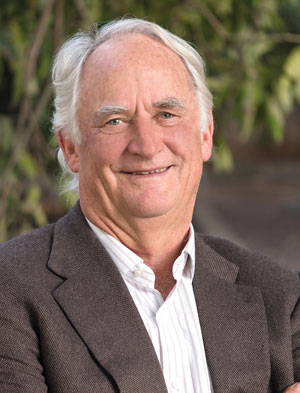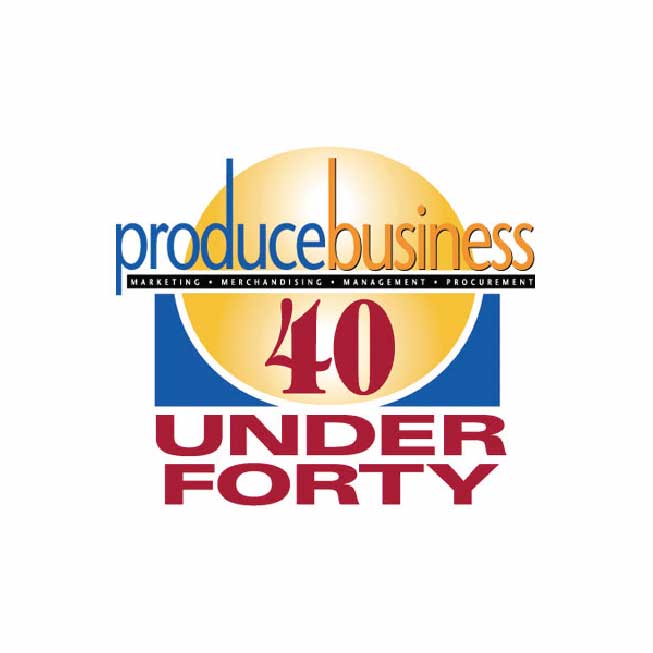Celebrating 35 Years — Vanguards Who Made a Difference: MILES REITER
September 27, 2021 | 6 min to read
Over the course of the year, we pay tribute to 35 living Vanguards and 12 departed heroes. This month’s featured Vanguard is Miles Reiter of Driscoll’s.
Originally printed in the November 2020 issue of Produce Business.

Driscoll’s
Deep in his DNA, as a fourth-generation grower and son of one of Driscoll’s founders, Miles Reiter owned his calling. His steady, front-line leadership and pioneering vision over the decades catapulted Driscoll’s into a global fresh berry powerhouse, and raised the entire industry to new plateaus. Far-reaching impacts span innovating superior proprietary berry varieties, creating iconic branding, game-changing retail packaging and “berry patch” merchandising. His strategies involved executing sophisticated global supply chain alignment grounded in ethical, sustainable sourcing, to ensure year-round availability, ultimately driving product value and increased produce consumption.
“My lineage and heritage created a clarity and focus on fresh berries. I tend to take a generational, long-term view, looking to the future as well as the past,” Reiter says, noting, “Our fifth generation is very involved and capable. A long-term view makes a difference in how you go about things, like breeding and genetic development and environmental issues. It helps you be both focused and patient.”
The whole idea of creating value with the end user has a long heritage in the family as well. So that’s built into his mission. “My grandfather’s sister, who was married to R.O. Driscoll, came across a unique strawberry variety in 1904 while travelling in Europe and brought it back to California. My grandfather was in business with his brother-in-law, so that’s how the Reiter’s and Driscoll’s are related; we share the same great-grandfather. They started growing the variety, which became known as the “Banner Berry,” mostly selling in San Francisco and LA markets, shipping by rail, so a unique berry essentially branded that really performed in the marketplace goes way back to the early 1900’s.
Based on differentiated genetics, Reiter’s grandfather was instrumental in getting the California strawberry UC breeding program growing, then he and his father started their own raspberry breeding program. Ultimately, the founding of Driscoll’s was in order to fund private breeding on a collective basis with a small group of growers. “So, genetics has been central 115 years now in our background. They were at that for 40 years before they even formed Driscoll’s,” he says.
Reiter became chairman of Driscoll’s in 1988 in the face of tragedy. He was only 38 years old at the time when his parents were killed in a plane crash in the Canary Islands. There was consolidation occurring in the produce industry, especially with the big tropical fruit companies. Driscoll’s was recognized as the leading trade brand for strawberries. The original founding group, which basically involved five families, decided to pursue what was just starting to emerge as the berry patch idea in retail, where berries would be sold together. In those days, strawberries would be the big promotional item, except on the East Coast. Then Fourth of July, East Coast retailers would have blueberry sales, but they never got to the West Coast. Raspberries were so perishable and expensive and only available a short time of the year. Then blackberries tasted so bad nobody would buy them, according to Reiter. “We launched the idea of creating a company that brought all four berries together, 52 weeks a year, which meant getting out of our comfort zone.” Driscoll’s had just been in California, albeit a very long season. That lead to Florida and Mexico and Chile.
Packaging was an issue and Reiter took the lead. “We came up with the clamshell, which was actually sort of slow taking off, but ultimately completely transformed the industry.” At first, Driscoll’s was the only one that had a clamshell and nobody else was too eager, according to Reiter. The retailers were a little slow to catch on, but a few did. What they realized was how quickly they could replenish their display. It made a huge difference because to get those extra pints was very labor-intensive. It made it easier for the consumers to buy them and put them in the cart without having them spill or get crushed. While refrigerators are frost-free now, blueberries would dehydrate in the old containers. So, everybody got a win out of that. “Eventually, everybody followed suit. In retrospect, why it took so long is a little bit surprising.”
The clamshell also helped the four-berry merchandising because you could stack in retail, and since they were all in stackable, similar packaging increased velocity for the retailer and created revenue density. Reiter quickly figured out this new packaging gave Driscoll’s a vehicle to do consumer level branding centered on building trust with shoppers to drive repeat purchases year-round. “We decided to go into four berries and year-round availability to make the company more formidable in the marketplace. The growers had to be successful, number one, not only to keep the business but to grow it. The way I looked at it, if the growers are doing well, most of them are going to want to reinvest and expand. So, if the grower gets the major cut of the profitability, you get a lot of it back as invested capital.”
This precept served Reiter well in figuring out 52-week supply operations in challenging environments, and the ability to enter a broader range of markets and expand production globally with four business units: One is the Americas focused on the North American market, and another in Australia, both with very high market share; one focused on Europe primarily, but the Middle East and Africa too; and another unit focused on China.
“With all the geographies, you end up with inefficiencies and bureaucracies just to function, and added expense. The key is sharing knowledge in using genetics across geographies,” he says. “You can take a good variety and mess it up pretty easily depending on how and where you grow it.” For this reason, Driscoll’s maintains almost entirely exclusive varieties, he explains, noting, “with blueberries, we have a couple that are licensed but they are exclusive licenses.”
“The core strategy is we want the consumer to have a really good experience to drive repeat purchasing, even more important than the variety piece. That’s all of our jobs.”
Doing so ethically and sustainably is also a priority. On the environmental side, Reiter has personally taken a strong position in sustainable water resources, particularly in California, but also in Mexico. “I’ve kind of stood out in some positions that weren’t too popular with some people. We’re heavy plastic users. Ironically, we think the days of the clamshell are numbered. Even though we were very proud of creating it, we’d be proud to move on to the next thing,” he says, adding, “We’ve worked on a returnable system and high levels of recycling.”
“You can be confident that with the Driscoll label, conscientious work was done to ensure ethical treatment of farm workers. Our Mexico business has provided major leadership in terms of building ethical practices across the entire Mexican agriculture sector. We were a pretty big part of drawing the agricultural workers into the social security system of Mexico, for example.”
Reiter has participated on the boards of major trade organizations, including PMA and Western Growers, but in his view his contributions are “pretty modest.” Abundantly certain is Reiter’s immense contributions to consumers and to the success of retailers and the supply chain behind it. “The big thing for retailers is to move the top line, and they are more oriented toward getting the traffic to the store than they are on things like shrink or whether they have to a pay a premium. They want traffic and movement, and that’s where we try to satisfy. We won’t sell you the cheapest berry; we’ll sell you the berry that will move off your shelf and give you a ring more quickly with more density to the amount you devote to it.”

